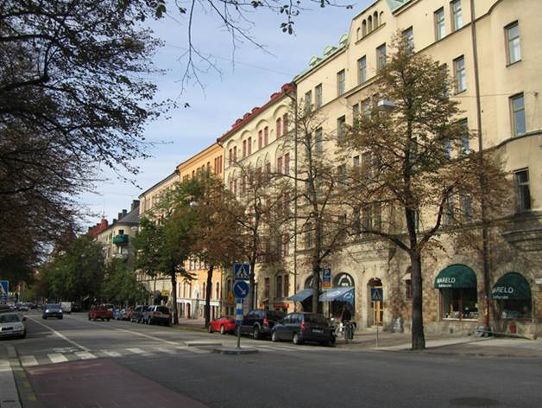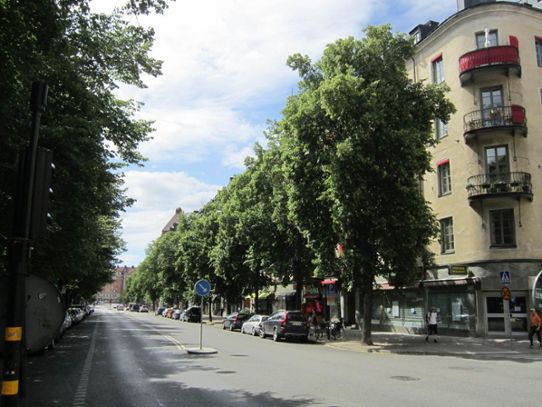Using trees reduced the negative effects of climate change. This means that planting new trees is important from the perspective of climate change adaptation.

In cities, there are many trees that are doing badly because of poor growing conditions. In some cases, planting, establishment and/or maintenance can be a contributory cause for trees faring badly in contemporary urban environments.
Lack of space
Trees often have a limited space in which to grow, regardless of whether they are placed in a lawn or area with a hard ground surface.
Lack of oxygen
Pores that are the main source of water and air movements in the soil are pressed together in dense ground surfaces and destroy the entire balance, leading to poorer growing conditions, lack of oxygen and carbon dioxide poisoning.
Lack of water
Hard ground surfaces lead rainwater to the surface runoff system and not down into the ground, which means that water transport is impaired and the tree does not get sufficient water.
Lack of nutrients
Hard surfaces in street environments prevent organic material from getting into the ground.
Salt damage
When snow and ice melt, salt used to prevent skidding can end up in the beds where trees are growing. In combination with poor drainage, the salt can remain and cause clogged pores, which leads to a lack of oxygen and water.
Pruning damage
Pruning cuts on the trunk or branches can cause serious harm such as rot to urban trees and increase the risk of falling branches.
Physical damage
Use of surfaces under trees for driving or parking causes physical damage to trees and compacts the soil.
Conflict with pipes
Digging/repairs close to trees’ root systems in the ground risk causing direct physical damage and damage through ground compaction.
These problems mean that it is important to provide good growing conditions for all urban trees so that they can thrive in an urban environment and contribute to a better climate.
Solution

One solution can be to create new special growing beds in the form of specially constructed skeletal soils. The purpose of a skeletal soil is to cope with the weight of heavy traffic without the soil becoming compacted and at the same time, be a substrate for the tree’s roots. The tree is not planted directly in the skeletal soil, instead this acts as an extra soil deposit under and around the hole used for planting. Skeletal soil is a soil construction that consists of two different parts, one a skeleton made of rough crushed rock that is there to bear the load and one a growing soil in which the roots can grow. This soil construction is built up in layers, with the growing soil being flushed down into the crushed rock in several batches. In addition, there is the airy foundation and the growing soil in the hole the tree is planted in. A geotextile is laid above and the surface construction is completed with a layer of gravel and paving.
Costs
Replanting an existing tree is estimated to cost just over SEK 65 000, including all materials.
Planting a tree in an existing environment costs around SEK 95 000.
The cost of planting trees in a new environment is estimated to be 50% lower than planting them in an existing environment.
More examples of climate adaptation
This is one of many examples of climate adaptation. There are more in the collection of ideas being built up by the Swedish National Knowledge Centre for Climate Change Adaptation at the Swedish Meteorological and Hydrological Institute (SMHI). The collection of examples has the aim of sharing experiences and providing ideas to everyone who works with climate adaptation. Examples describe concrete measures and challenges in several subject areas. They show how different actors have worked to adapt their activities to the climate changes that are already being noticed today and those that we cannot prevent in the future.